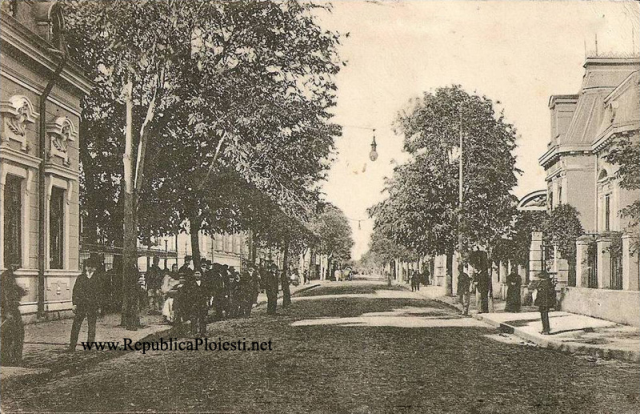The Bombing Raids in Ploiesti
When Romania joined the Axis in WWII, it relied a lot on its oil resources in support of the war effort

Steliu Lambru, 12.07.2021, 13:06
The city of Ploiesti lies 60 km north of Bucharest, and in practical terms is considered an extension of the capital city. It is the seat of Prahova County, and the most important resource there are the oil fields, which was the driver of development there since mid-19th century. When Romania joined the Axis in WWII, it relied a lot on its oil resources in support of the war effort. As a German ally, Romania found itself at war with countries that had previously been friendly, such as the United States and Great Britain.
During the war, the precious oil in Prahova County put a target on it for enemy bombers. Starting in 1941, when the USSR was the main aim, Soviet aircraft made the first attempts at bombing the refineries in Ploiesti. Historian Lucian Vasile is the author of a monograph about Ploiesti, analyzing the impact of bombings there between 1941 and 1944. Vasile says that Soviet bombing raids had an insignificant impact:
“Soviet attacks could not compare to the later American raids. They were minor in terms of destruction. There were a few dozen rudimentary plains, if we are to compare with a few years later, when hundreds of American bombers arrived, with fighter escort. The Soviet bombings of 1941 were like a scratch for the city of Ploiesti. A few dozen bombs fell in the city, causing a few civilian victims, causing minor damage to some refineries. They were short lived, a few weeks, then the frontline got pushed further, and Ploiesti was out of range for Soviet planes.”
In December 1941, after Pearl Harbor, Romania declared war to the US, and the Americans turned their attention on cutting off the fuel supply to Germany and its allies. The first American raid on Ploiesti was launched in June 1942, with the planes taking off from Benghazi, Libya. Lucian Vasile told us about the first encounter between the American air forces and the defenses in Ploiesti:
“The first American raid, in 1942, was a daytime raid. The Americans came during the day because they preferred taking an additional risk bombing during daytime in order to have higher accuracy in their attacks. This was a tactic that was diametrically opposed to the British one. The British attacked at night, even though they had lower accuracy then running the raids during daytime.”
The Germans built a strong ring of defense around the city, with hundreds of AAA artillery pieces and a few dozen fighter planes. Operation Tidal Wave of August 1943 involved 170 B-24 Liberator heavy bombers, keen on wiping out the refineries. The mission was a failure, as the Romanian-German defenses brought down 53 attacking aircraft, with 440 American airmen killed and 220 taken prisoner. Tidal Wave is considered one of the worst failures of American aviation in the war. However, in the spring of 1944, the US air forces would exact their revenge. Here is Lucian Vasile:
“The bombings of 1944 leveled the city. The entire industry was gravely affected, and the residential areas bore the brunt. One out of eight buildings were wiped out, and one out of three were sorely damaged. The center of the city was the target, at least in May 1944. That bombing was meant to spread terror, sapping the morale of the citizens, in the hope of pushing them to rebel or sabotage the ability of the Romanian-German authorities to defend the city.”
As always during war, it is not all heroics, there are all sorts of errors as well, and Ploiesti proved to have one major vulnerability. That was the neighborhood called Mimiu, inhabited mostly by a Rroma population, living in extreme poverty. The bombings hit there the worst, but not with any intention. Lucian Vasile told us why:
“Mimiu was a suburbia of the city. It was not a target as such, but was a major vulnerability for the city defenses early in the war. A great part of passive preparations, meaning preparing the citizens for bombings, was aimed at defending at night. Early in the war, the people of Ploiesti were preparing for night raids. The entire city was blacked out at night, all lights were off, and the refinery installations were camouflaged. In the winter of 1941-1942, an analysis of the city indicated that it was completely dark at night. However, the Mimiu neighborhood was highly visible from the sky. The population there, lacking means of heating their homes, used soil soaked in oil residues and byproducts, which burned bright and belched heavy smoke. The entire city was in pitch darkness, but the neighborhood of Mimiu was burning bright. It was all for nought.”
On August 23, 1944, Romania broke its alliance with Germany, and bombing raids against Ploiesti ceases. The oil industry started rebuilding, and people regained hope in the ending of a war that had brought such destruction and sorrow in their lives.





























